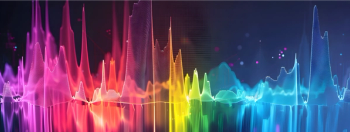
Karl Norris: A Pioneer in Optical Measurements and Near-Infrared Spectroscopy, Part I
In this "Icons of Spectroscopy" column, executive editor Jerome Workman Jr. details how Karl H. Norris has impacted the analysis of food, agricultural products, and pharmaceuticals over six decades. His pioneering work in optical analysis methods including his development and refinement of near-infrared (NIR) spectroscopy has transformed analysis technology. This Part I article of a two-part series introduces Norris’ contributions to NIR.
The first installment of a two-part "Icons of Spectroscopy" series, introduces the life and early scientific contributions of Karl H. Norris, the founding father of near-infrared (NIR) spectroscopy. With a career that began in the mid-20th century and extended over six decades, Norris’ work at the U.S. Department of Agriculture helped shift NIR from a scientific curiosity to a core analytical technique used globally. Part I focuses on his early development of optical methods, the principles behind NIR analysis, and how his foundational work sparked a revolution in the way agricultural and food products are measured and evaluated. Norris’ innovations not only transformed the USDA’s analytical capabilities but laid the groundwork for a technology that would become indispensable across multiple industries.
Introduction
Karl Howard Norris (1921-2019) was a pioneering and founding figure in the field of near-infrared (NIR) spectroscopy, whose contributions laid the foundation for modern applications of this prolific analytical technique. From his 98 years of life and an active scientific career spanning more than six decades, Norris developed innovative instrumentation, mathematical calibration techniques for quantitative and qualitative analysis, and practical applications that revolutionized agricultural analysis and extended into fields such as food science, crop and animal science, pharmaceuticals, clinical medicine, and industrial quality control. His work at the U.S. Department of Agriculture (USDA) and collaborations and mentorship with academic and industrial partners established NIR spectroscopy as a mainstream and essential analytical tool.
Original Scientific Contributions
Norris earned a B.Sc. degree in Agricultural Engineering from Pennsylvania State University in 1942, followed by further technical training in advanced radio and microwave electronics through the U.S. Army Signal Corps at the University of Chicago. His early career included work at the Institute of Radiobiology and Biophysics at the University of Chicago (1946–1949), where he developed instruments for biophysical research. In 1950, he joined the Instrumentation Research Laboratory at the USDA Agricultural Research Center in Beltsville, Maryland, where he remained until his retirement (3–8).
Initially, Norris focused on developing optical and electronic methods for agricultural quality assessment. His first major contribution was an automated egg-sorting system based on light transmittance and reflectance principles, which replaced manual candling and significantly improved sorting efficiency. This work attracted national attention, including an inspection visit from President Dwight D. Eisenhower in 1953 (3).
Norris’s most inventive work came with his research in NIR spectroscopy. Recognizing that agricultural products exhibited characteristic absorption features in the near-infrared region, he hypothesized that these spectral signatures could be used for rapid, non-destructive compositional analysis. By developing the first practical NIR reflectance instruments, Norris enabled the accurate estimation of moisture, protein, oil, and fiber content in cereals, grains, and forages. His introduction of derivative spectroscopy and mathematical pre-treatments of NIR spectral data greatly improved the precision and reliability of NIR calibration models for multiple parameters in agricultural and food products (3–8).
NIR Spectroscopy
Norris’s most significant contribution was pioneering the use of NIR reflectance and transmission spectroscopy for rapid, non-invasive compositional analysis of agricultural products, including most grain and forage types. Before his work, the NIR region was largely considered unsuitable for quantitative analysis due to overlapping overtone and combination bands from the fundamental infrared absorption bands and thus was mostly ignored. However, Norris demonstrated that with proper mathematical data analysis treatments—particularly derivative spectroscopy and quotient mathematics—NIR data could provide accurate predictions of chemical composition in these products. His work established the principles of modern NIR spectroscopy, influencing its application in food, agriculture, pharmaceuticals, clinical, and industrial materials. The widespread adoption of NIR has led to its application in evaluating most natural products during at least one stage of production (3).
At USDA, Karl Norris developed the first computerized near-infrared spectrophotometer (Photo Courtesy of Reference [2]).
Characterized by its ability for NIR energy to penetrate deeper into samples with minimal sample preparation as compared to infrared or Raman spectroscopy, NIR spectroscopy most often relies heavily on partial least squares (PLS) calibration to deconvolute overlapping overtone and combination bands. Typically, mathematical preprocessing is applied to spectra to compensate for random noise, light scattering, reflection, and sample compression (packing) variations. In its earliest applications, NIR quantitative analysis relied on simpler, rudimentary calibration mathematics such as multiple linear regression (MLR) analysis, demonstrated in references (9–12). Today, advanced laboratory, portable, and handheld NIR instruments utilize artificial intelligence (AI) and machine learning (ML) algorithms for quantitative and qualitative analysis.
Throughout his career, Norris contributed extensively to the scientific literature on NIR spectroscopy and instrumentation. His publications spanned peer-reviewed journals, government (USDA) technical reports, and conference proceedings. Notably, he edited the Instrument News section of the Journal of Agricultural Engineering for over a decade. His research papers detailed the mathematical and engineering principles underlying NIR spectroscopic analysis, particularly in agricultural applications. His contributions also extended to collaborations with statisticians and chemometricians, advancing methodologies for multivariate spectral analysis for both quantitative and qualitative analysis for many material types.
References
(1) Photo courtesy of USDA Hall of Fame Page. Available at:
(2) Photo courtesy of USDA Agricultural Research Service Page. BARC agricultural engineer Karl Norris develops the first computerized near-infrared spectrophotometer. This noninvasive technique measures numerous traits without destroying the sample. Today it is used to help keep our food supply safe and ensure the quality of many of our commodities. (Photo by Fred Witt, Image Number K9635-1). Available at:
(3) Williams P. Karl H. Norris, the Father of Near-Infrared Spectroscopy. NIR news. 2019, 30 (7-8), 25–27. DOI:
(4) U.S. National Academy of Engineering, Karl H. Norris Page. Available at:
(5) Dignity Memorial Karl H. Norris Obituary Page. Saturday, October 05, 2019. Available at:
(6) Beltsville News Page, September 09, 2019. Karl H. Norris, Obituary 2 Page. Available at:
(7) National Agricultural Library, U.S. Department of Agriculture Karl Norris Publications Archive Page. Karl H. Norris Papers, Collection Identifier: MS0490 (1948–2013). Available at:
(8) Beltsville Agricultural Research Center of the U.S. Department of Agriculture Karl Norris Search Page. Available at:
(9) Norris, K. H.; Hart, J. R. Direct Spectrophotometric Determination of Moisture Content of Grain and Seeds. In Principles and Methods of Measuring Moisture Content in Liquids and Solids; Reinhold Publishing: New York, 1965; Vol. 4, pp 19–25.
(10) Ben-Gera, I.; Norris, K. H. Direct Spectrophotometric Determination of Fat and Moisture in Meat Products. J. Food Sci.1968, 33 (1), 64–67. DOI:
(11) Ben-Gera, I.; Norris, K. H. Determination of Moisture Content in Soyabeans by Direct Spectrophotometry. Israel Journal of Agricultural Research 1968, 18 (3), 125–32 ref. Bibl. 15, CABI Record Number: 19691701115.
(12) Hruschka, W. R.; Norris, K. H. Least-Squares Curve Fitting of Near Infrared Spectra Predicts Protein and Moisture Content of Ground Wheat. Appl. Spectrosc, 1982, 36 (3), 261–265. DOI:
Newsletter
Get essential updates on the latest spectroscopy technologies, regulatory standards, and best practices—subscribe today to Spectroscopy.





